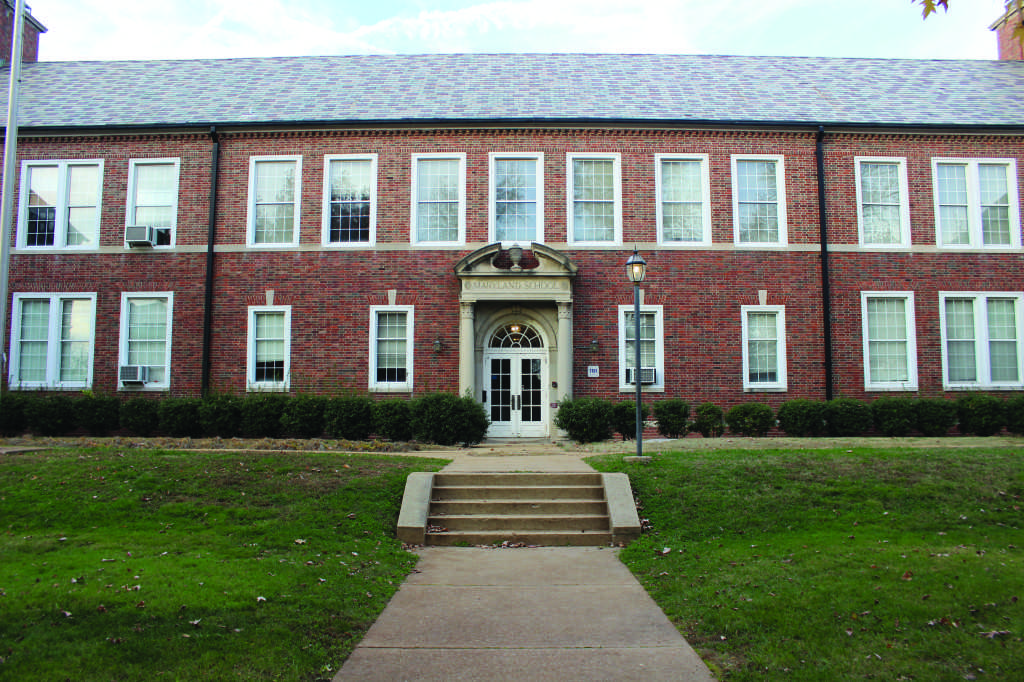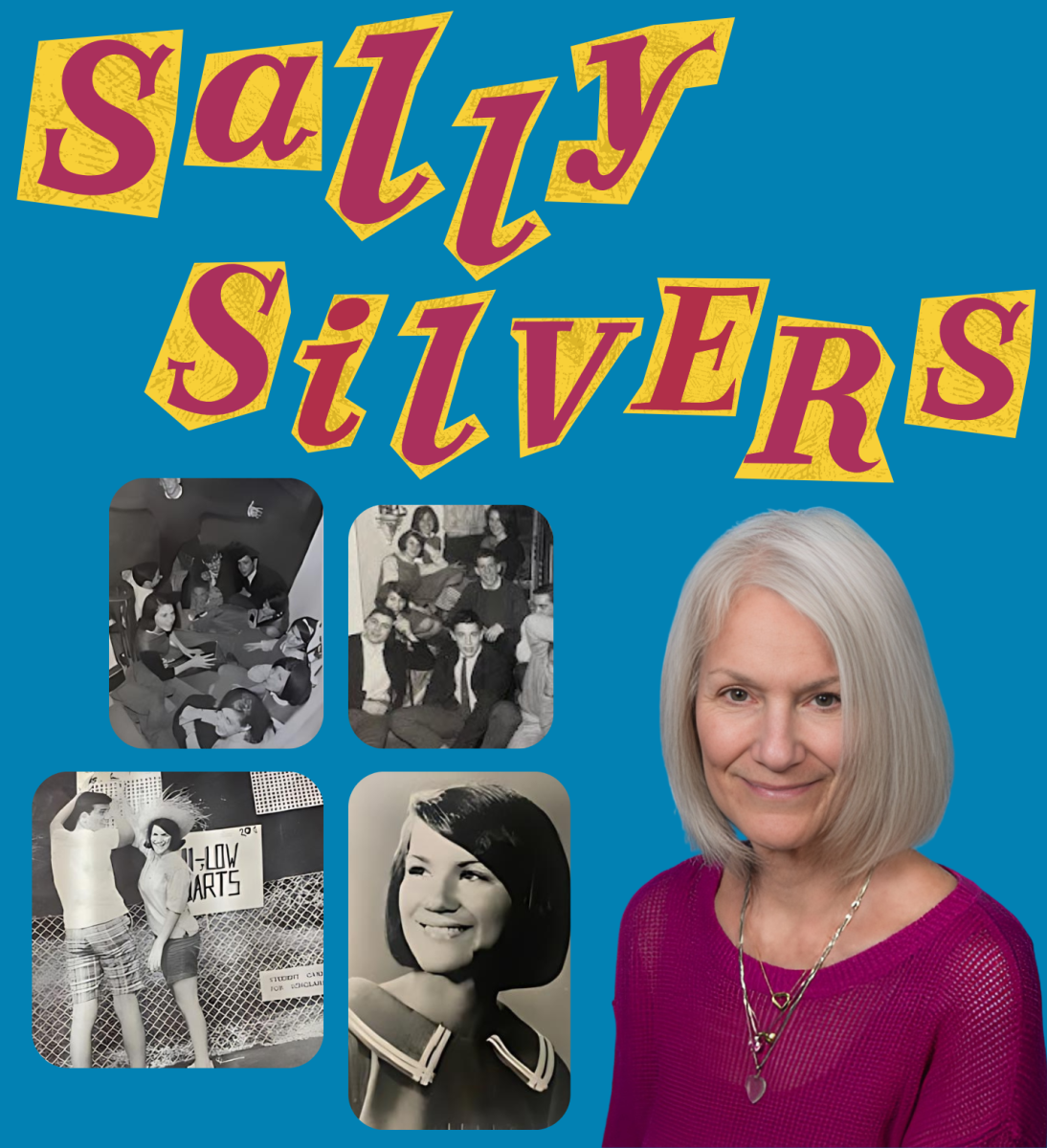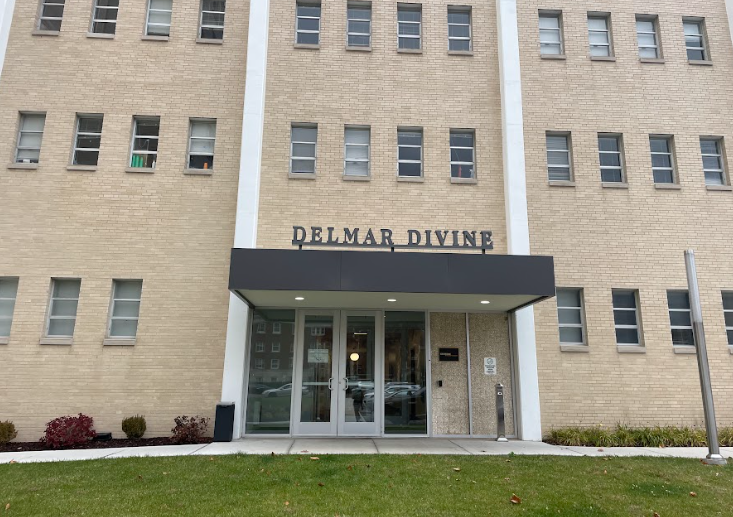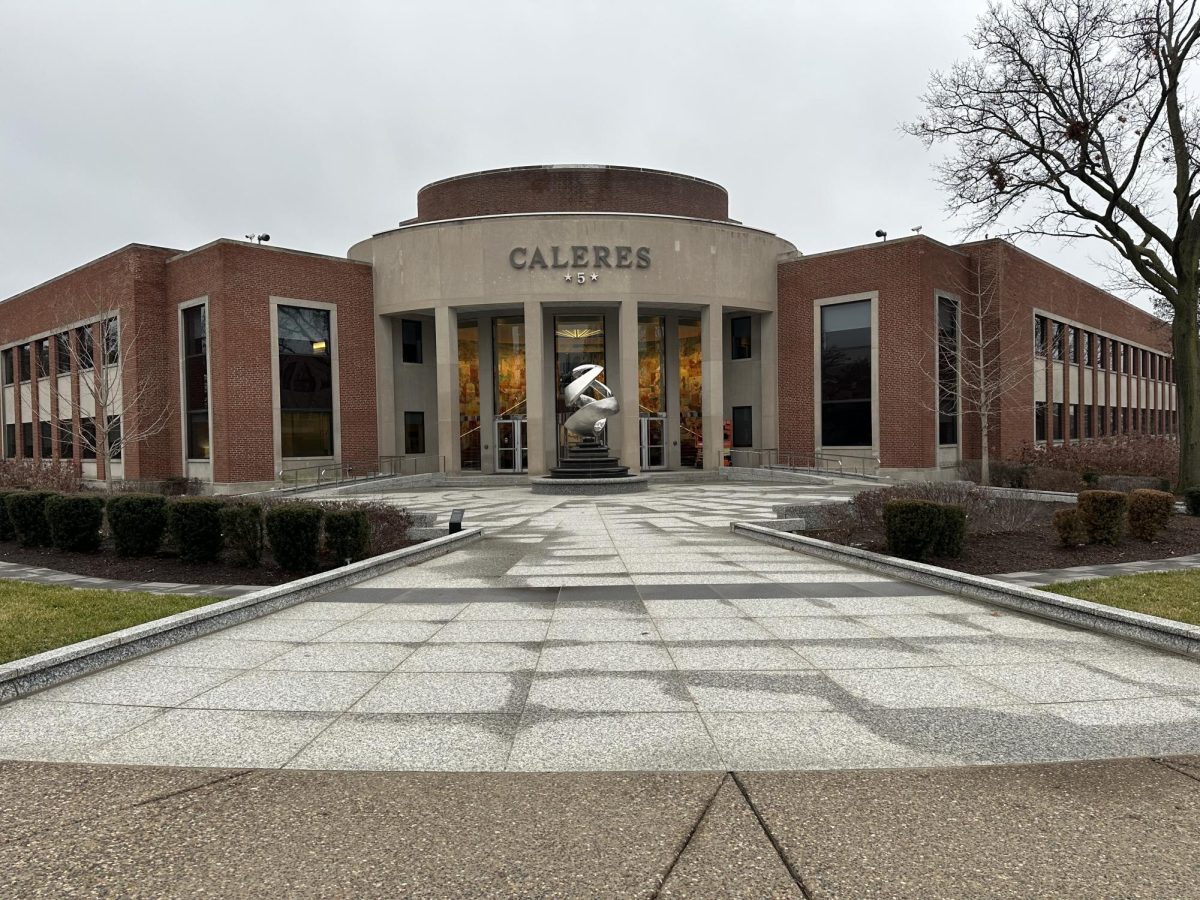By Katherine Ren & Jeffrey Friedman (additional reporting by Emma Ehll, photos by Olivia Macdougal)
On November 12, about a dozen Meramec Elementary schoolers and their younger siblings attended that night’s Board of Education meeting. Each held a hand-drawn “Save Our Parks†sign as they lined up in front of the board members who would ultimately decide whether they would still have a place to play and plant their community garden the following year.
After being declared “district surplus†in 2009, the Maryland School property was put on sale in November of 2012. The property lies in the middle of the Maryland and Westmoreland neighborhoods and has served as a green space where neighborhood children can play; a reprieve from the densely populated suburban setting. The property also neighbors the historic Hanley House and is home to a historic school building designed by the architect of the iconic American brick schoolhouse – William Ittner.
With the property for sale, community members in the surrounding neighborhoods worry that new development on the site may change the dynamic of the area and eliminate valuable green space and historic value.
In attempts to conduct a confidential negotiation process, the District has disclosed minimal information regarding the sale of the property to the public. As a result, community members have been trying to gather as much information as possible on their own and have attempted to make their voices heard at Board of Education as well as Board of Aldermen meetings.
Background
In 2008, the School District of Clayton created a Properties and Partnerships Subcommittee as part of the District’s ongoing Blueprint-for-Tomorrow Facilities Master Plan process. The committee was given the responsibility to look at District surplus properties that might impact the District’s facilities master plan decisions at the time.
The committee was given a list of properties under review; among the properties was the Maryland School.
In the report issued by the committee in May of 2008, the group recommended that the District “take action at an appropriate time by declaring these facilities surplus, putting the properties on the market, and seeing if there is interest in purchasing the properties, preferably by a tax-generating entity.â€
The committee also made the following suggestion in their official report submitted to the Board: “If the District decides to put Maryland School on the market, the District should partner with the City and neighborhood residents to influence the type of development built on these properties. This partnership will help to ensure that quality-of-life issues such as housing style, density and green space are addressed.â€
Clayton residents whose homes surround the property feel as though this recommendation was neither fully considered nor fully implemented.
The committee viewed the selling of the Maryland School in a positive light for a variety of reasons. First, from close examination of District’s history, there would not be growth in student enrollment and thus the property would not be necessary for educational purposes.
Additionally, it had been 28 years since the Maryland School was closed and the renovations required to make it functional after close to three decades would have exceeded the District’s financial capabilities.
“The Maryland School closed in the 1980’s,†Chris Tennill, Chief Communications Officer of the School District of Clayton, said. “Then in the 80’s it was rented by the Clayton Child Center, who moved out around 2007, right about when we declared it surplus property. Since then it’s been used by the Wilson School and Early Childhood classrooms when Clayton High School was under construction. So the property has been rented for the bulk of the past 30 years and now it’s just a big storage unit.â€
Tennill said that in 2009 the real estate market was such that it didn’t make sense to try to market the property, so the District has waited until now to put the property up for sale.
Differing Perspectives
While the Clayton administration is currently assisting the Board of Education in the sale of the Maryland School, the Board will make the final decision regarding the sale.
[All Board Members Contacted Declined to Comment on this Story]
“We’re the ones who are doing most of the leg work,†Tennill said. “We are kind of just the facilitators in the middle of [them]. Certainly we’re available to talk through all the pertinent issues with the Board and answer whatever questions they have because as the administration, we’re the ones who are entrenched more in the day-to-day operations of the District.â€
From the District’s perspective, all decisions made regarding the sale of the Maryland Property will be driven to maximize District resources to improve the District’s quality of education.
“The District is not in the development or real estate business,†Tennill said. “It is in the education business. Our primary mission is to provide the quality of education the community expects us to provide for students. To do that takes a lot and we need to benefit from our resources. So at the end of the day, the Board and the District have a fiduciary responsibility to maximize the value of this asset, this surplus property … the highest and best use for that property right now is for the District to sell it, and take the revenue and use the revenue in that to invest it back into our budget or invest in new capital projects.â€
However, residents of the neighborhood surrounding the property, such as Anneliese Schaefer, a resident of Westmoreland Avenue for seven and a half, are concerned.
“For buying our house that was a big factor – having a park across the street from our house because our house, like many houses in the area, has a small backyard,†Schaefer said.
Although the District is the rightful owner of the Maryland property, the members of the immediately surrounding community see the space as a natural part of the area that, if significantly altered, would strip the identity away from the neighborhood. The residents feel that not only does the green space provide a better quality of life for the residents, but the historic school building, created by architect William Ittner, is viewed as a unique architectural feature on which the community prides itself.
In terms of Clayton history, the widely-known farmer Martin Franklin Hanley owned the property that currently consists of the Maryland School, the adjacent Bracken Building and the neighboring green space. The Hanley family’s dwelling faces and, at one point, likely overlooked the Maryland property itself.
But for Scott Partridge, who also has lived across from the green space for seven years, historic value and green space are not the only reasons he is concerned about the sale.
“It’s significant in a couple of respects,†Partridge said. “It’s significant because of its historic nature, one. It’s also significant because that property has never been on modern tax roles. So it’s not as if that was tax-bearing property that generated income for the modern City of Clayton.â€
According to the members of the community who have been the most outspoken on this issue, the sale of the Maryland School is in contradiction with the City of Clayton’s stated goal of preserving green space in residential areas.
“People actually thought that the city meant what they said about preserving green space … and I’m not prejudging what the city is going to do, but I know what they’re not doing: they’re not leading here,â€Â Partridge said. “They’re waiting for something to come to them. They’re not standing up and saying ‘wait a minute … we should be buying this property, we should be keeping this property, we should be preserving this schoolhouse and we should be maintaining this green space. That’s what we said we were going to do, and that’s what we’re going to do.’ That’s what they’re not doing.â€
However, it is not the apparent lack of action by the city or even the loss of the Maryland property itself that is the primary frustration for the neighborhood, but rather what they feel has been a the lack of transparency by the Clayton Board of Education.
According to Bridget McAndrew, another resident of the Maryland and Westmoreland area, the selling process has been shrouded in secrecy. McAndrew said that the District refuses to answer any questions whatsoever about the situation.
As a result, the community members have nothing to support their opinions but sheer rumor and speculation.
“Most recently, our understanding has been that there was a bidding window of time and a synagogue had submitted a bid,†Schaefer said. “Something that came to us, and I don’t know if this has been verified, is that there was a second bid from a developer but it was after the bidding window had closed … so the bid from the developer was the winning bid. Our understanding is that the intention is to build a 44 unit condominium building on that property.â€
In response to the grievances expressed by many community members regarding the lack of transparency of the issue, Tennill provided reasons as to why information released regarding the negotiation process has been limited.
“There’s a very good reason why public entities like school districts, cities and other portions of state governments don’t have to negotiate real estate deals in public,†Tennill said. “If we’re sitting out there letting everyone know ‘this is what we’re offering and what we’re able to do’ … we lose leverage if the deal falls through and we have to negotiate with a new buyer.â€
Tennill also clarified some of the community members’ confusions.
“There was no bidding window,†Tennill said. “There was no point of time where we asked for the best and final offers. We did receive a number of different offers on the property, more than just the two that everyone in the community is discussing. And at this point we can’t really go into a whole lot of detail about them … But once we close on a sale, I know that all the details of that specific sale will be available. But until then, just because it doesn’t make sense to negotiate a real estate deal in public, we’re going to keep those details confidential.â€
From the information the residents have been able to gather, the condominium developer, the likely purchaser of the property, would completely wipe out the property as it is.
McAndrew said that perhaps the District has forgotten that her’s is a quiet, residential neighborhood and that it would prefer to stay that way.
“There are 28 children under the age of 18 on my street alone,†McAndrew said. “Building 44 townhouses would destroy our quiet neighborhood and add a large amount of traffic to my street. I have some major concerns about the safety of all these children with that many cars.â€
Further neighborhood complaints expressed include the opening of Maryland to through traffic by the loss of a traffic island, altered water drainage and increased school crowding.
Resident Steven Rosenblum is still confident that the different parties can agree on a mutually desirable outcome.
“We think there is a way for everyone to come out to do good; to benefit the city, to benefit the school board and to benefit the residents,†Rosenblum said. “It’s never been a fight. It’s never been contentious. It’s always been very civil … that’s our main goal: to keep it a civil conversation where everybody can win.â€
At this point, the Board is involved in negotiations and no final decision has been made.
“We are negotiating with a buyer,†Tennill said. “And we’ve told Maryland residents, we’ve told the city that once we have a contract negotiated, we’ll put that information out as to who that contract is negotiated with. At this point though, it’s really premature to release all those details because contract negotiations for real estate deals fall through all the time so it’s a pretty long, arduous process that we’re going through to negotiate all that. So putting information out now is getting ahead of where we are and we’d be putting information out there that might completely change.†⎫












